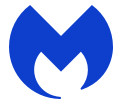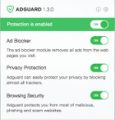What is BoostConsole
BoostConsole is a PUA (potentially unwanted app) that falls under the category of Adware. Adware is considered by many to be synonymous with ‘malware’. It is a form of harmful applications that shows unwanted ads to computer users. Some examples include pop-up advertisements, push notifications or unclosable windows. Adware can be installed onto your computer via infected web sites, when you open email attachments, anytime you download and install free applications.
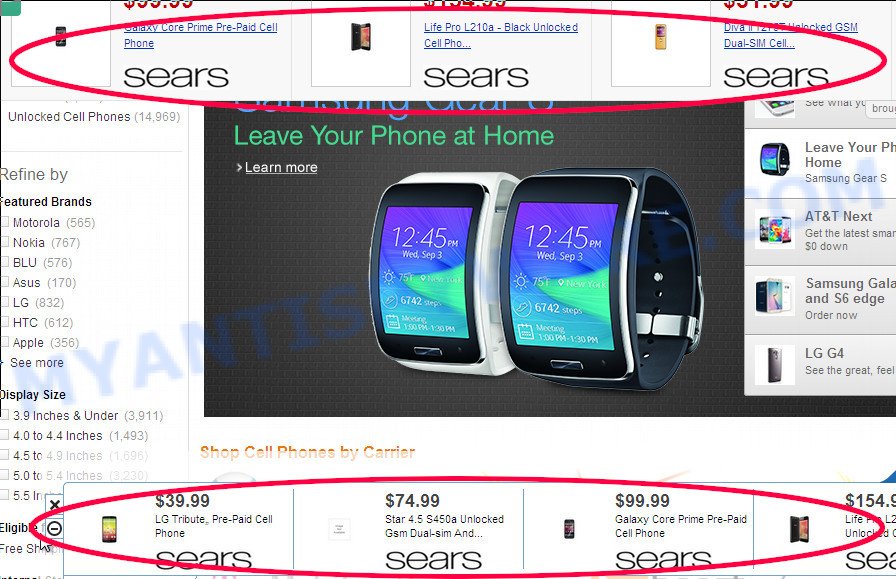
Unwanted ads
Another reason why you need to remove the BoostConsole adware is its online data-tracking activity. It has the ability to gather your surfing history and confidential information, including passwords and credit card numbers. In the future, marketing-type data about you can be transferred third party companies. We recommend to remove BoostConsole adware, as soon as you found this issue, as it can redirect your internet browser to web-resources which can load other unwanted apps on your MAC.
How does BoostConsole get on your MAC OS
Adware most likely to occur during the installation of free software due the fact that potentially unwanted apps like this are usually hidden in the installation package. Thus, if you’ve installed some freeware using Quick(Standard) method, you may have let adware get inside your MAC. Keep in mind that the Quick mode is unreliable because it do not warn about bundled software. Thus, additional apps will be installed automatically unless you select Advanced/Custom mode and uncheck its installation.
Threat Summary
| Name | BoostConsole, BoostConsole 1.0 app |
| Type | adware software, potentially unwanted application (PUA), Mac virus, Mac malware |
| Detection Names | OSX.Trojan.Gen, Adware/Adload!OSX, Osx.Adware.Cimpli, ApplicUnwnt, MacOS.Agent-MT, Program:MacOS/Vigram.A, Adware.MAC.Generic and Trojan-Downloader.OSX.Adload |
| Distribution | Freeware installers, misleading popup ads, fake update tools and torrent downloads |
| Symptoms | Your web-browser is redirected to websites you did not want, browser pop ups appear and recommend fake Jave updates, your computer starts automatically installing unexpected software, unwanted web-browser toolbars, your internet browser settings are being changed without your request, fast Internet but slow browsing speeds. |
| Removal | BoostConsole removal guide |
How to Remove BoostConsole (removal steps)
We can assist you delete BoostConsole from your web-browsers, without the need to take your MAC to a professional. Simply follow the removal instructions below if you currently have the intrusive adware on your machine and want to remove it. If you have any difficulty while trying to delete the adware, feel free to ask for our help in the comment section below. Some of the steps below will require you to close this web site. So, please read the few simple steps carefully, after that bookmark it or open it on your smartphone for later reference.
To remove BoostConsole, execute the following steps:
- Remove unwanted profiles on Mac device
- Check the list of installed applications
- Remove BoostConsole related files and folders
- Scan your Mac with MalwareBytes
- Remove BoostConsole from Safari, Chrome, Firefox
- How to stay safe online
- Finish words
Remove unwanted profiles on Mac device
BoostConsole can make changes to the Mac system such as malicious changes to browser settings, and the addition of malicious system profiles. You need to check the system preferences, find and remove malicious profiles and ensure your settings are as you expect.
Click Apple menu ( ![]() ) > System Preferences.
) > System Preferences.
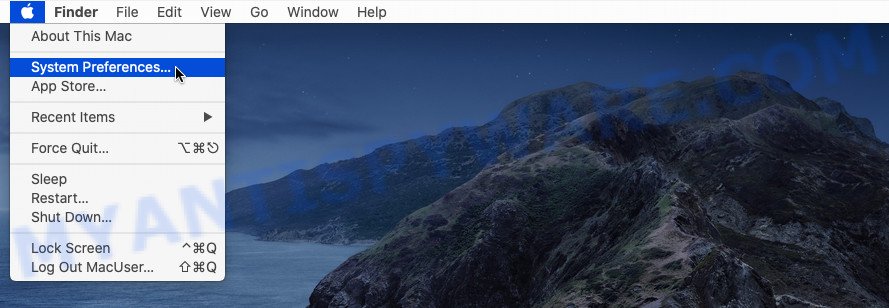
In System Preferences, select Profiles. if there is no Profiles in the list of preferences, that means there are no profiles installed on the Mac device. If there is Profiles in the list, then click on it, then select a profile related to BoostConsole.
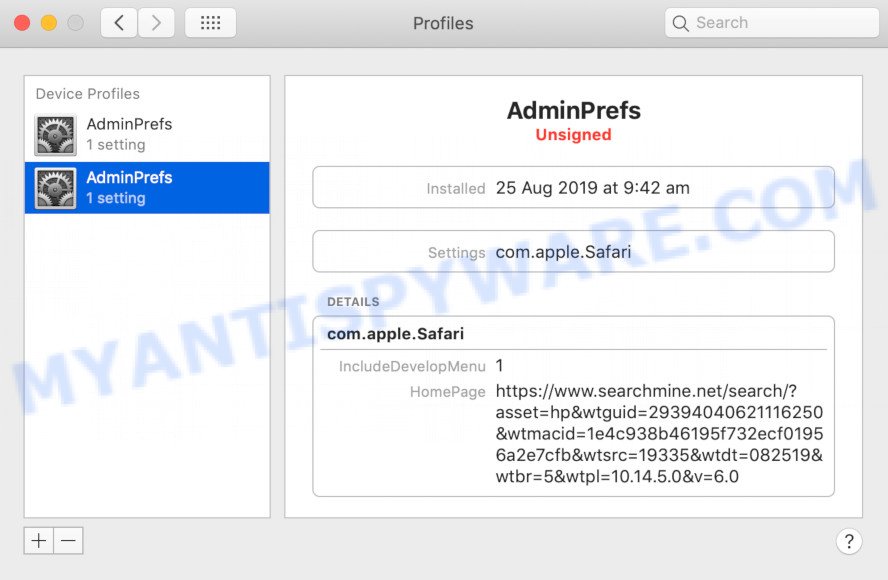
To delete a malicious profile, click on the minus button ( – ) located at the bottom-left of the Profiles screen.
Check the list of installed applications
The next step in deleting adware, PUPs and browser hijackers by yourself is to go into the Finder, then Applications. Take a look at the list of programs on your Mac device and see if there are any dubious and unknown apps. If you see any, you need to uninstall it. Of course, before doing so, you can do an Web search to find details on the program. If it is a adware, PUP and browser hijacker, you will likely find information that says so.
Open Finder and click “Applications”.
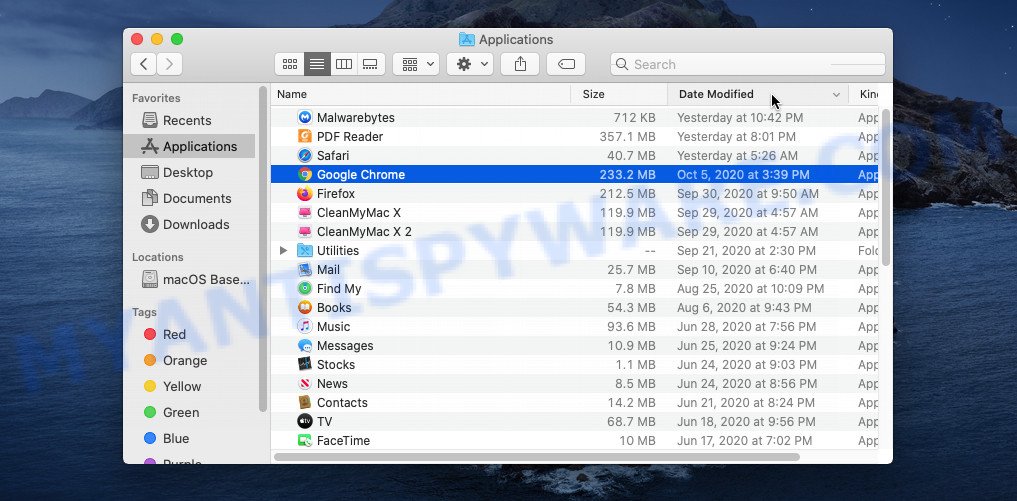
Carefully browse through the list of installed applications and delete all suspicious and unknown software.
When you’ve found anything suspicious that may be the BoostConsole adware or other potentially unwanted program, then right click this program and choose “Move to Trash”. Once complete, Empty Trash.
Remove BoostConsole related files and folders
Now you need to try to find BoostConsole related files and folders, and then delete them manually. You need to look for these files in certain directories. To quickly open them, we recommend using the “Go to Folder…” command.
BoostConsole creates several files, these files must be found and removed. Below is a list of files associated with this unwanted program.
- /Library/LaunchDaemons/com.BoostConsole.system.plist
- ~/Library/LaunchAgents/com.BoostConsole.service.plist
- /Library/Application Support/.(RANDOM)/System/com.BoostConsole.system
- ~/Library/Application Support/.(RANDOM)/Services/com.BoostConsole.service.app
Some files created by BoostConsole are hidden from the user. To find and delete them, you need to enable “show hidden files”. To do this, use the shortcut CMD + SHIFT + . Press once to show hidden files and again to hide them. There is another way. Click Finder -> Applications -> Utilities -> Terminal. In Terminal, paste the following text: defaults write com.apple.finder AppleShowAllFiles YES

Press Enter. Hold the ‘Option/alt’ key, then right click on the Finder icon in the dock and click Relaunch.
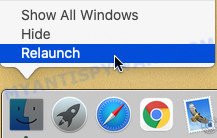
Click on the Finder icon. From the menu bar, select Go and click “Go to Folder…”. As a result, a small window opens that allows you to quickly open a specific directory.

Check for BoostConsole generated files in the /Library/LaunchAgents folder

In the “Go to Folder…” window, type the following text and press Go:
/Library/LaunchAgents
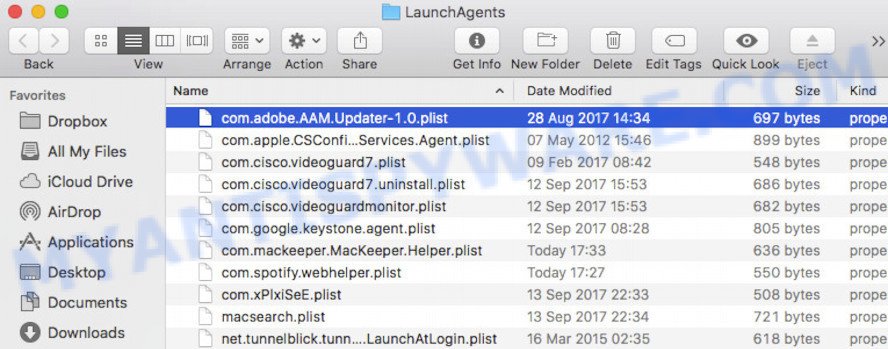
This will open the contents of the “/Library/LaunchAgents” folder. Look carefully at it and pay special attention to recently created files, as well as files that have a suspicious name. Move all suspicious files to the Trash. A few examples of files: installapp.plist, com.BoostConsole.service.plist, com.net-preferences.plist, com.google.defaultsearch.plist, , macsearch.plist, com.machelper.plist and search.plist. Most often, PUPs, adware software and browser hijackers create several files with similar names.
Check for BoostConsole generated files in the /Library/Application Support folder

In the “Go to Folder…” window, type the following text and press Go:
/Library/Application Support
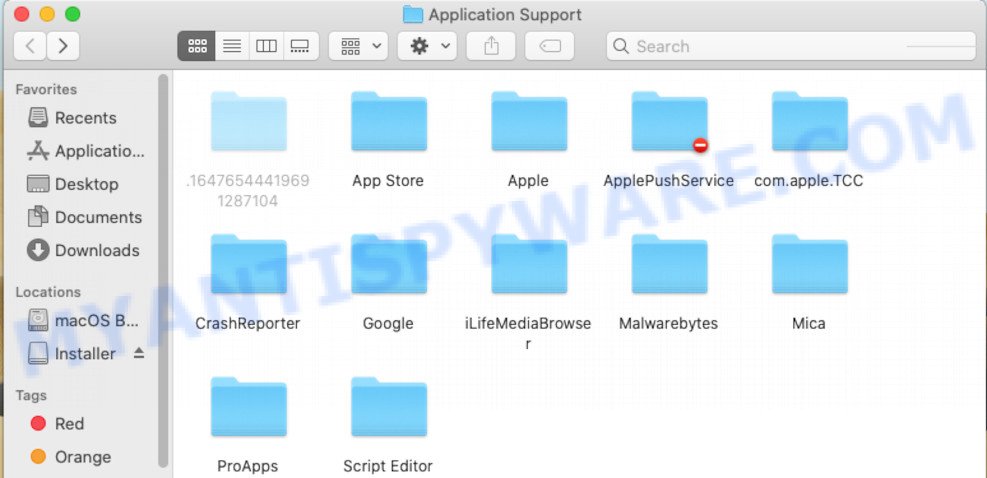
This will open the contents of the “Application Support” folder. Look carefully at its contents, pay special attention to recently added/changed folders and files. Check the contents of suspicious folders, if there is a file with a name similar to com.BoostConsole.system, then this folder must be deleted. Move all suspicious folders and files to the Trash.
Check for BoostConsole generated files in the “~/Library/LaunchAgents” folder

In the “Go to Folder…” window, type the following text and press Go:
~/Library/LaunchAgents

Proceed in the same way as with the “/Library/LaunchAgents” and “/Library/Application Support” folders. Look for suspicious and recently added files. Move all suspicious files to the Trash.
Check for BoostConsole generated files in the /Library/LaunchDaemons folder
In the “Go to Folder…” window, type the following text and press Go:
/Library/LaunchDaemons

Carefully browse the entire list of files and pay special attention to recently created files, as well as files that have a suspicious name. Move all suspicious files to the Trash. A few examples of files to be deleted: com.BoostConsole.system.plist, com.search.system.plist, com.installapp.system.plist, com.machelper.system.plist and com.macsearch.system.plist. In most cases, browser hijackers, adware and potentially unwanted programs create several files with similar names.
Scan your Mac with MalwareBytes
We recommend using MalwareBytes Anti Malware to scan the Mac device for adware software, browser hijackers and potentially unwanted programs. This free tool is an advanced malware removal program designed by (c) Malwarebytes lab. This application uses the world’s most popular antimalware technology. It’s able to help you remove browser hijackers and other security threats from your Mac for free.
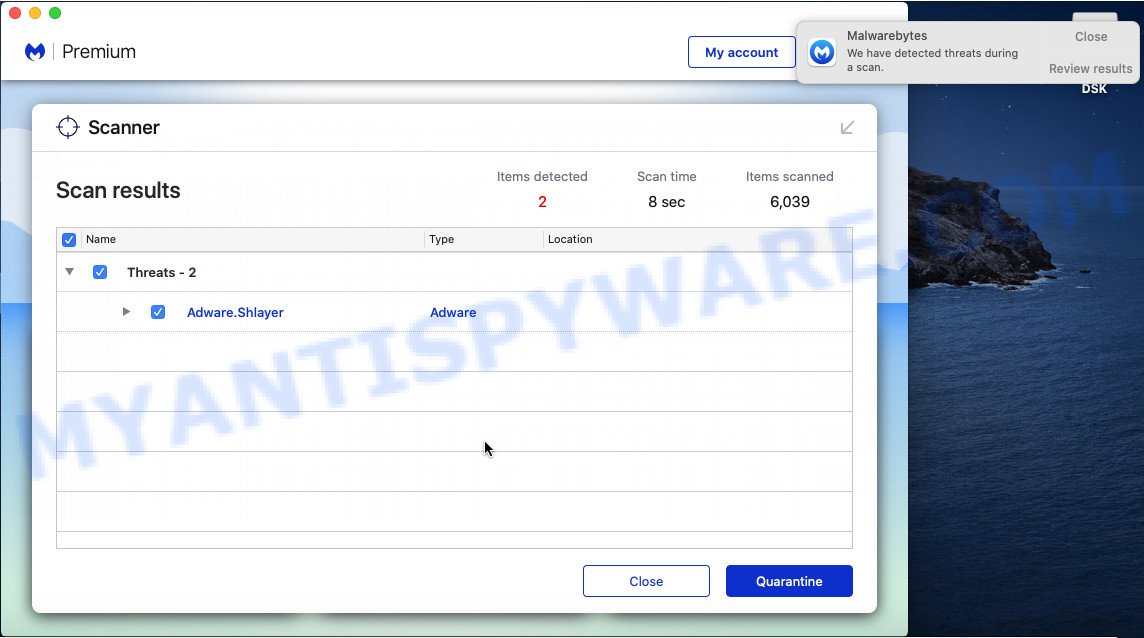
- Visit the page linked below to download the latest version of MalwareBytes Anti Malware for Apple Mac.
Malwarebytes Anti-malware (Mac)
21017 downloads
Author: Malwarebytes
Category: Security tools
Update: September 10, 2020
- After downloading is done, close all programs and windows on your machine. Open a folder in which you saved it. Run the downloaded file and follow the prompts.
- Click the “Scan” button for scanning your computer for the BoostConsole adware. When a malware, adware software or PUPs are detected, the number of the security threats will change accordingly. Wait until the the scanning is finished.
- Once MalwareBytes Anti-Malware has completed scanning your computer, you will be displayed the list of all found items on your machine. Next, you need to press “Quarantine”.
Remove BoostConsole from Safari, Chrome, Firefox
If you’re still seeing BoostConsole that won’t go away, you might have harmful extensions installed on your web-browser. Check your browser for unwanted extensions using the steps below.
You can also try to remove BoostConsole by reset Google Chrome settings. |
If you are still experiencing problems with BoostConsole adware removal, you need to reset Mozilla Firefox browser. |
|
How to stay safe online
We recommend to install an ad-blocker program. The adblocker utility like AdGuard is a application which basically removes advertising from the Web and stops access to malicious websites. Moreover, security experts says that using ad blocking applications is necessary to stay safe when surfing the Net.
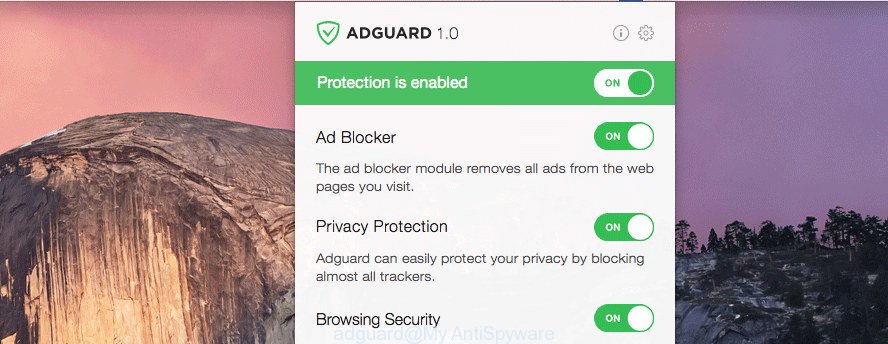
- Download AdGuard on your MAC system from the link below.
AdGuard for Mac download
3779 downloads
Author: © Adguard
Category: Security tools
Update: January 17, 2018
- After downloading is finished, start the downloaded file. You will see the “Setup Wizard” program window. Follow the prompts.
- When the setup is complete, press “Skip” to close the install program and use the default settings, or click “Get Started” to see an quick tutorial which will allow you get to know AdGuard better.
- In most cases, the default settings are enough and you do not need to change anything. Each time, when you start your Apple Mac, AdGuard will start automatically and stop unwanted ads, block malicious and misleading web pages.
Finish words
After completing the step-by-step guide outlined above, your MAC OS should be clean from this adware and other malware. The Firefox, Safari and Chrome will no longer display any unwanted ads when you surf the Internet. Unfortunately, if the tutorial does not help you, then you have caught a new adware software, and then the best way – ask for help.
Please create a new question by using the “Ask Question” button in the Questions and Answers. Try to give us some details about your problems, so we can try to help you more accurately. Wait for one of our trained “Security Team” or Site Administrator to provide you with knowledgeable assistance tailored to your problem with the BoostConsole adware.
